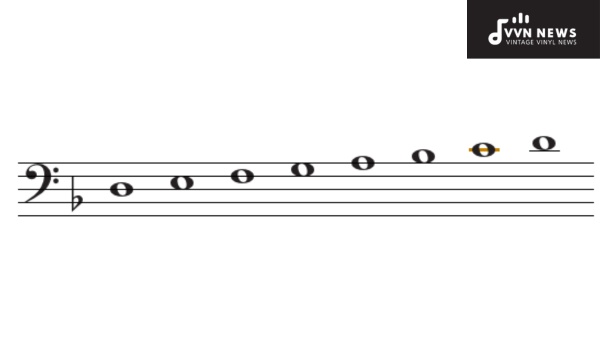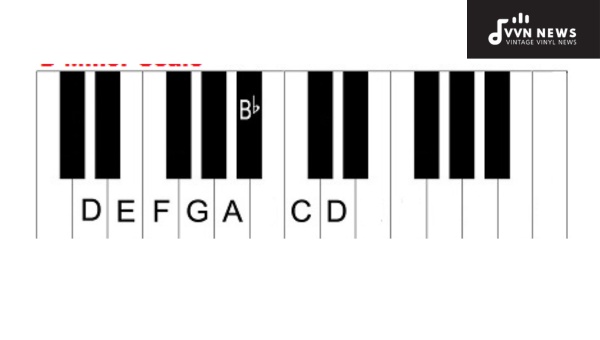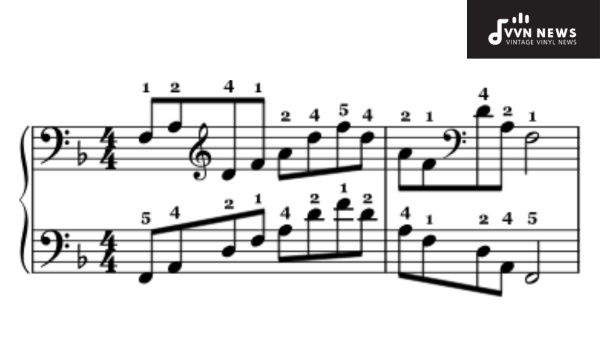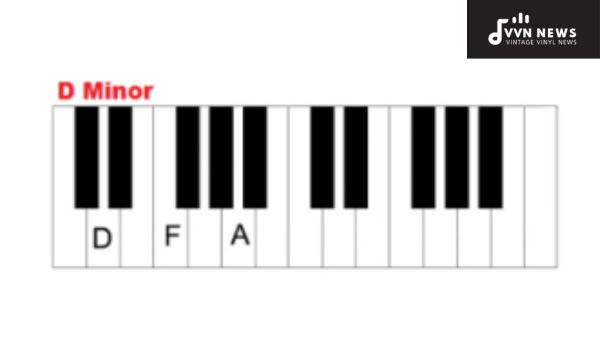Exploring D Minor Chords can be an exciting journey for any musician, whether you’re a beginner or an experienced player.
I have always found the study of music theory and chord progressions fascinating. In this blog post, I want to delve into the world of D minor chords, exploring their unique characteristics and discussing how they can be used effectively in various musical contexts.
Understanding different chord qualities and their applications is crucial for musicians seeking to develop their musicality.
By exploring D minor chords specifically, we can gain valuable insight into how these chords are constructed and the emotions they evoke within a composition.
Whether you’re a guitarist, pianist, or even a songwriter, knowing how to use D minor chords effectively will open up a multitude of possibilities for your musical creations.
So, without further ado, let’s dive into the world of D minor chords and unlock their hidden potential.
What are D Minor’s Basic Chords?
When exploring D minor chords, it’s important to understand the basic chord shapes that make up this tonality. The three primary chords in the key of D minor are D minor, E diminished, and F major.
- D minor chord: The D minor chord consists of three notes – D, F, and A. You can play this chord on a piano by placing your thumb on D, your middle finger on F, and your pinky finger on A.
- E diminished chord: The E diminished chord is formed by combining the notes E, G, and B♭. On a piano, you can play this chord by placing your thumb on E, your middle finger on G, and your pinky finger on B♭.
- F major chord: The F major chord includes the notes F, A, and C. To play this chord on a piano, place your thumb on F, your middle finger on A, and your pinky finger on C.
By understanding these basic chords in the key of D minor, you have a strong foundation to build upon when creating chord progressions or improvising in this key. Experimenting with different variations and inversions of these chords will allow you to create unique sounds and add depth to your musical compositions.
How do you play D Minor on piano?

Playing the D minor chord on piano is a fundamental skill for any pianist or keyboardist. It involves pressing down specific keys to create a harmonious sound. Here’s a step-by-step guide on how to play the D minor chord on piano:
- Start with the right hand: Position your right hand above the keyboard with your fingers relaxed.
- Find middle C: Begin by locating middle C, which is typically marked by two black keys in the center of the keyboard.
- Place your fingers on the keys: Place your thumb (1) on D, your middle finger (3) on F, and your pinky finger (5) on A. Remember that finger numbers are associated with each finger. Odd numbers represent the thumb and fingers on the right hand, while even numbers represent fingers on the left hand.
- Play all three keys simultaneously: Press down all three keys mentioned above simultaneously with an even amount of pressure. Ensure that your fingers are curved and not flat.
- Experiment with different dynamics: Once you’ve learned the basic D minor chord position, try varying the intensity at which you press down the keys to create different dynamics and expressiveness in your playing.
- Practice transitioning to other chords: As you become more comfortable with playing D minor, start practicing transitioning from D minor to other chords to improve your overall proficiency and versatility as a pianist.
Spend some time each day practicing this chord shape and incorporating it into different songs or progressions. With patience and dedication, you will soon develop fluency and confidence in playing D minor on piano.
Also Read: A Diminished Triad [Unlock Hidden Chords On Your Guitar]
How Does D Minor Sound on Guitar?
D minor is a versatile and popular key in guitar music. Its haunting and melancholic sound is often associated with emotional depth and introspection.
When played on the guitar, D minor chords create a sense of darkness and mystery, making them ideal for expressing a wide range of emotions in your compositions.
1. Open Chord Shape: The most common way to play D minor on the guitar is using an open chord shape.
Place your index finger on the first fret of the high E string, your middle finger on the second fret of the G string, and your ring finger on the third fret of the B string.
Strum all six strings starting from the open D string (4th string). This produces a rich, full-bodied sound that resonates with depth.
2. Power Chord Variation: Another option is to play a power chord variation of D minor. This involves playing only two notes: the root note (D) and the fifth note (A).
To play this variation, place your index finger on the 5th fret of both the A and D strings, then strike those two strings together.
3. Barre Chord Shape: For more versatility and control over your chord voicings, you can also use barre chords for D minor.
This allows you to move up and down the neck, playing different inversions and adding variations to your chord progressions.
4. Fingerpicking Style: Playing D minor using fingerpicking techniques adds a delicate touch to its melancholy nature.
By plucking individual strings with your fingers, you can create a beautiful arpeggiated texture that enhances its emotional impact.
5. Adding Embellishments: To further enhance the sound of D minor chords on guitar, don’t be afraid to explore different embellishments and variations.
Try adding a sus2 or sus4 to your D minor chords for a dreamy, ethereal quality. Experiment with hammer-ons, pull-offs, and slides to add subtle nuances and expressiveness.
Playing D minor chords on the guitar opens up a world of musical possibilities.
Whether you’re strumming along with a sad ballad or creating a dark, brooding atmosphere in your own composition, understanding how D minor sounds on the guitar will help you evoke the desired emotions from your audience.
Also Read: G Sharp Diminished Triad [Explore Unique Guitar Chords]
What are D Minor’s Seventh Chord Variations?

Seventh chords are chords that add the seventh note of the scale to the triad, creating a rich and colorful sound. Let’s explore the various seventh chord variations that can be derived from the D minor key.
1. D Minor 7 (Dm7)
The D minor 7 chord is created by adding the seventh note (C) to the D minor triad (D, F, A). This chord is often used in jazz and blues genres to add a mellow and soulful flavor to compositions.
2. E Half-Diminished 7 (Em7♭5)
The E half-diminished 7 chord, also known as E minor seven flat five, consists of E, G, B♭, and D. This chord has a dissonant and unresolved quality that makes it suitable for creating tension in musical progressions.
3. F Major 7 (Fmaj7)
The F major 7 chord incorporates the notes F, A, C, and E. It has a smooth and soothing sound that is often associated with bossa nova and lounge music.
4. G Minor 7 (Gm7)
The G minor 7 chord includes the notes G, B♭, D, and F. It has a melancholic yet warm quality that can evoke different emotional responses depending on its context within a composition.
5. A Minor 7 (Am7)
The A minor 7 chord consists of A, C, E, and G. This chord is widely used in various musical genres due to its versatility and harmonic stability.
6. B♭ Major 7 (Bbmaj7)
The B♭ major 7 chord combines the notes B♭, D, F, and A. It has a bright and uplifting sound that is commonly found in jazz and pop music.
By incorporating these seventh chord variations into your compositions, you can add depth, sophistication, and emotional richness to your music.
How can you form D Minor chord progressions?
Creating chord progressions using D minor chords can add depth and emotion to your music. Here’s a step-by-step guide on how to form D minor chord progressions:
- Understand the D minor scale: The D minor scale consists of the notes D, E, F, G, A, B♭, and C. Familiarize yourself with this scale as it will serve as the basis for your chord progressions.
- Explore chord options: In addition to the basic D minor, E diminished, and F major chords discussed earlier, you can incorporate other chords from the key of D minor into your progressions. These include G minor, A minor, B♭ major, and C major.
- Experiment with different orders: Explore different orders of the chords to create interesting progressions. For example:
- Dm – Am – Em – F
- Gm – F – B♭ – C
- Try different rhythms: Varying the rhythm of your chord progression can change its feel significantly. Experiment with different strumming patterns or rhythmic structures to find what fits best with your musical style.
- Add seventh chords: To add more complexity and color to your progressions, consider incorporating seventh chords derived from the key of D minor. These include:
- Dm7: Play a regular D minor chord (D-F-A) and add the note C.
- Em7: Play a regular E diminished chord (E-G-B♭) and add the note D.
- Fmaj7: Play a regular F major chord (F-A-C) and add the note E.
- Gm7: Play a regular G minor chord (G-B♭-D) and add the note F.
- Experiment with inversions: Inversions of the D minor chords can create smoother progressions and unique sounds. Try using different inversions for each chord in your progression to achieve a more interesting and dynamic musical flow.
These steps serve as a starting point, and creativity is key when it comes to forming chord progressions.
Also Read: A Flat Diminished Triad [Delve Into Rare Guitar Chords]
D Minor Chord Inversions

Inversions provide a way to play a chord with different voicings and can add variety and interest to your musical compositions. They involve rearranging the order of the chord’s notes while still maintaining the original chord quality.
To create D minor chord inversions, we’ll start with the basic D minor chord (D, F, A) and explore various ways to reorganize these notes on the piano or guitar fretboard.
Root Position (D Minor)
The root position of a chord is when its root note is placed at the lowest position. For D minor, this means that D is the lowest note in the chord. It’s denoted as Dm or Dmin.
First Inversion (Dm/F)
In the first inversion of D minor, we raise the root note (D) one octave higher. This results in F being played as the lowest note in the chord. It is notated as Dm/F.
Second Inversion (Dm/A)
The second inversion of D minor brings us further exploration and creativity. Now, we raise both D and F one octave higher than before. The A note becomes the lowest-sounding note in this inversion. It is represented as Dm/A.
Understanding these inversions allows you to play D minor chords in different positions on your instrument. By incorporating inversions into your playing style, you can add depth to your compositions and captivate listeners with unique voicings of this versatile chord.
D Minor Ear Training Techniques
Ear training is an essential skill for any musician, as it helps develop a strong sense of pitch, tonality, and overall musicality. When it comes to D minor chords, there are a few ear-training techniques that can greatly benefit your ability to recognize and utilize this tonality effectively.
1. Interval recognition: Focusing on the intervals within a D minor chord can help you train your ears to identify its distinct sound. Start by familiarizing yourself with the intervals within the chord: the root (D), the minor third (F), and the perfect fifth (A). Practice singing or playing these intervals separately and then as a chord to develop your ear’s perception of D minor.
2. Chord progression identification: Listening to songs or compositions that heavily feature D minor chords is an excellent way to train your ear to recognize their sound in context. Analyze the chord progressions used in these songs and pay attention to how D minor chords are used within them. This will enable you to identify D minor chords more easily when you hear them in other musical pieces.
3. Playing by ear: Trying to play songs or melodies by ear that are in the key of D minor is another effective way of training your ears. Start with simple tunes or melodies and gradually progress to more complex pieces. By listening attentively and trying to reproduce what you hear, you will enhance your ability to identify D minor chords as well as other musical elements.
4. Transcribing: Transcribing music is a great exercise for honing your ear training skills. Choose songs or solos that include D minor chords and try to transcribe them by ear onto sheet music or a notation software program. This process will strengthen your ability to recognize not only D minor but also various chord progressions, melodies, and harmonies.
Remember that consistent practice is key when it comes to ear training. Spend dedicated time each day or week focusing on these techniques, and over time, you will notice a significant improvement in your ability to recognize and utilize D minor chords confidently.
Also Read: A Flat Minor Triad [Guide to Unusual Guitar Chords]
How does D Minor differ across instruments?
While the concept of D minor remains the same across different instruments, the way it is produced and sounded can vary. Here are some key differences to note:
1. Piano: On a piano, playing a D minor chord involves pressing the keys D, F, and A simultaneously. The piano’s rich and resonant sound allows for a full-bodied expression of the chord.
2. Guitar: To play D minor on a guitar, you typically use four fingers to fret the strings in specific positions. For example, one common position is placing your index finger on the first fret of the first string (high E), your middle finger on the second fret of the third string (G), and your ring finger on the third fret of the second string (B). Strumming these strings produces a distinct sound that resonates through the guitar’s body.
3. Bass Guitar: When playing D minor on a bass guitar, you focus on the lower range of notes to provide a foundation for harmonies. This involves using techniques like plucking or slapping to produce deep, resonating tones.
4. Violin: On a violin, playing D minor involves positioning your fingers correctly on specific strings while applying pressure with the bow to create sound. The violin’s timbre lends itself to producing expressive and emotional renditions of D minor.
It’s important to note that while these instruments may have variations in their techniques and sounds when playing D minor chords, they still contribute harmonically to any musical composition involving this key.
Embracing these instrument-specific qualities can offer unique sonic possibilities when exploring D minor chords across different arrangements and genres.
What are Common Transitions from D Minor?

As a musician, it’s important to understand common chord progressions and transitions in order to create a cohesive and captivating musical piece.
When exploring D minor chords, several common transitions can add flavor and complexity to your compositions.
Transition to the Relative Major: F Major
One common transition from D minor to the relative major key is F major. The relative major key shares the same key signature as its relative minor but has a different tonic or starting note.
Transitioning from D minor to F major adds a sense of brightness and upliftment to your composition.
Moving to the Dominant: A Major
Another popular transition from D minor is moving to the dominant chord, which in this case is A major. The dominant chord has a strong pull towards the tonic chord (D minor), creating tension that resolves when it returns back to the tonic. This transition creates a dynamic and energetic feel in your music.
Modal Interchange: Borrowing Chords from D Major
Modal interchange involves borrowing chords from parallel keys or modes. In the case of D minor, we can borrow chords from its parallel major – D major. This adds interesting tonal variations by introducing new chord flavors into your composition. Some common borrowed chords include G major, Bb major, and E7.
Chromatic Movement: Common Tone Transitions
Chromatic movement refers to moving between chords where only one note changes by a half-step at a time. For example, transitioning from Dm to Dm7 adds a chromatic movement by changing the C note in the Dm chord into a C# in the Dm7 chord. This creates tension and intrigue within your composition.
By understanding these common transitions from D minor, you can explore new possibilities in your music and develop unique chord progressions that capture listeners’ attention. Experiment with these transitions and allow your musical creativity to shine.
Why are D Minor Inversions Important?
Inversions play a crucial role in music theory and composition, as they offer different voicings and harmonic possibilities for chords. This holds true for D minor chords as well. By understanding and incorporating inversions, you can add depth and variety to your musical arrangements. Here’s why D minor inversions are important:
1. Enhanced Melodic Movement:
D minor inversions allow for smoother melodic movement by providing different note combinations and voicings. They can create beautiful melodic lines when used in conjunction with other chords in a progression.
2. Change of Chord Voicing:
Inversions can alter the sound and texture of a chord, adding interest and complexity to your compositions. By using different inversions of the D minor chord, you can experiment with different tonal qualities, creating a diverse palette of sounds.
3. Bass Line Variation:
By utilizing inversions, you can experiment with bass lines that move beyond the root note of the chord. This adds richness to your compositions and allows for more dynamic bass movement within your chord progressions.
4. Smooth Voice Leading:
Inversions allow for smoother voice leading between chords when playing progressions. This means that transitions between D minor chords and other chords will sound more seamless, enhancing the overall musical flow.
5. Expressive Harmonic Colors:
D minor inversions offer unique harmonic colors, enabling you to evoke different emotions within your compositions. Inversions provide opportunities for tension and resolution, leading to more expressive music.
Incorporating D minor inversions into your playing or compositions will elevate your musicality by adding depth, complexity, and melodic interest to your music. Experiment with different voicings and find the combinations that resonate with you the most.
Also Read: G Flat Minor Triad [Mastering Complex Guitar Chords]
FAQ About D Minor Chords
How do you play a D minor chord on a guitar?
To play a D minor chord on the guitar, place your index finger on the first fret of the high E string, your middle finger on the second fret of the G string, and your ring finger on the third fret of the B string.
What are some common progressions using D minor chords?
Common progressions involving D minor chords include Dm – Am – Em – G and Dm – F – C – G. These progressions create a melancholic or introspective vibe in music.
Are there any variations of seventh chords in D minor?
Yes, there are variations of seventh chords in D minor. Some common ones include Dm7 (D minor seventh), Em7 (E minor seventh), and Am7 (A minor seventh), each adding a unique flavor to chord progressions.
How can inversions be used with D minor chords?
Inversions can add variety and smooth transitions in chord progressions. For example, instead of playing the root position D minor chord, try playing the first inversion with F as the lowest note (F – A – D). It gives a different voicing to your music.
What are some ear training techniques for recognizing D minor chords?
Practicing intervals and melodies in the key of D minor will improve your ability to recognize its unique sound. Additionally, listening to songs that prominently feature D minor chords can help train your ear to identify them more easily.
Conclusion
Exploring D minor chords opens up a world of musical possibilities.
By understanding the basic chord shapes and their variations, musicians can create captivating chord progressions and evoke specific emotions within their compositions.
Whether you’re playing on a piano or a guitar, experimenting with different inversions and voicings of D minor chords will give your music a unique flavor.
Practice is key when it comes to mastering any chord progression – so keep playing, experimenting, and discovering new ways to use D minor chords in your musical journey.








